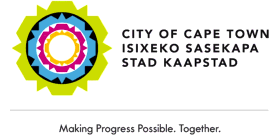 Bo-Kaap Traffic Shake-Up: Agent Advisory
Bo-Kaap Traffic Shake-Up: Agent Advisory
Cape Town’s vibrant Bo-Kaap neighborhood is implementing new traffic regulations for tour buses, effective immediately. This change aims to alleviate traffic congestion while preserving the neighborhood’s unique cultural heritage, impacting how African travel agents plan and execute tours in this iconic location.
Large tour buses (36-seaters and above) will no longer be permitted on Wale Street, the main thoroughfare through Bo-Kaap. Instead, these larger vehicles must utilize a new designated drop-off and pick-up point located on Buitengracht Street, just south of Wale Street. Three new bus bays are being added to Buitengracht between Church and Shortmarket Streets to accommodate this shift. Clear signage will direct drivers to these new locations.
Smaller tour buses (35 seats or fewer) retain access to Wale Street but are restricted to a designated drop-and-go zone outside the Bo-Kaap Museum. Following drop-off, these smaller buses must proceed to the designated parking area behind the Schotsche Kloof Civic Centre on Yusuf Drive. This tiered approach aims to manage traffic flow more effectively, minimizing disruption to residents while ensuring continued access for visitors.
These changes come in response to resident concerns about large tour buses navigating the narrow streets, originally designed for pedestrian and horse-drawn carriage traffic. The new regulations aim to strike a balance between facilitating tourism and preserving the Bo-Kaap’s residential character.
African travel agents are advised to adjust their tour itineraries accordingly. For tours utilizing larger buses, factor in the slightly longer route to the Buitengracht Street drop-off point, which adds approximately 500 meters and 15 minutes to the journey. Consider incorporating this additional time into walking tours or other activities within the Bo-Kaap.
For tours using smaller buses, the drop-and-go zone near the Bo-Kaap Museum offers convenient access to this key attraction. The subsequent transfer to the parking area on Yusuf Drive, approximately 300 meters and 5 minutes away, should be factored into tour schedules. This new system encourages a more pedestrian-focused experience within the Bo-Kaap, enhancing visitor immersion in the neighborhood’s vibrant atmosphere.
Tour operators are encouraged to explore alternative modes of transport within the Bo-Kaap, such as walking tours or guided tuk-tuk excursions. These options offer a more intimate and less intrusive way to experience the neighborhood’s charm, aligning with the city’s efforts to reduce congestion and preserve its unique character. Walking tours, in particular, allow for deeper engagement with the Bo-Kaap’s cultural heritage, offering a more authentic and enriching experience for visitors.
African travel agents can leverage these changes to enhance their tour offerings. By incorporating walking tours, culinary experiences, and interactions with local artisans, agents can create more immersive and culturally rich itineraries. Highlighting the Bo-Kaap’s unique history and vibrant community will resonate with travelers seeking authentic experiences, adding value to tour packages and attracting a wider range of clients.
The new traffic regulations present an opportunity for African travel agents to showcase their creativity and adaptability. By embracing these changes and developing innovative tour strategies, agents can enhance their services, cater to evolving traveler preferences, and contribute to the sustainable growth of tourism in the Bo-Kaap.
The provided visualizations offer valuable insights into the new traffic flow patterns, designated drop-off points, and alternative parking locations. Familiarize yourself with these resources to optimize tour logistics and ensure smooth operations under the new regulations. The distance calculations between key points will assist in accurately estimating travel times and planning efficient tour itineraries.
The financial implications of these changes are relatively minor, with estimated additional operating costs of approximately R40,875 per month for the entire tour bus industry serving the Bo-Kaap. This translates to a manageable increase for individual operators, particularly when weighed against the potential benefits of reduced congestion and enhanced visitor experience.
Collaboration between travel agents, tour operators, and local communities will be crucial for successful implementation of these new regulations. Open communication and a shared commitment to sustainable tourism practices will ensure that the Bo-Kaap remains a vibrant and attractive destination for generations to come.
